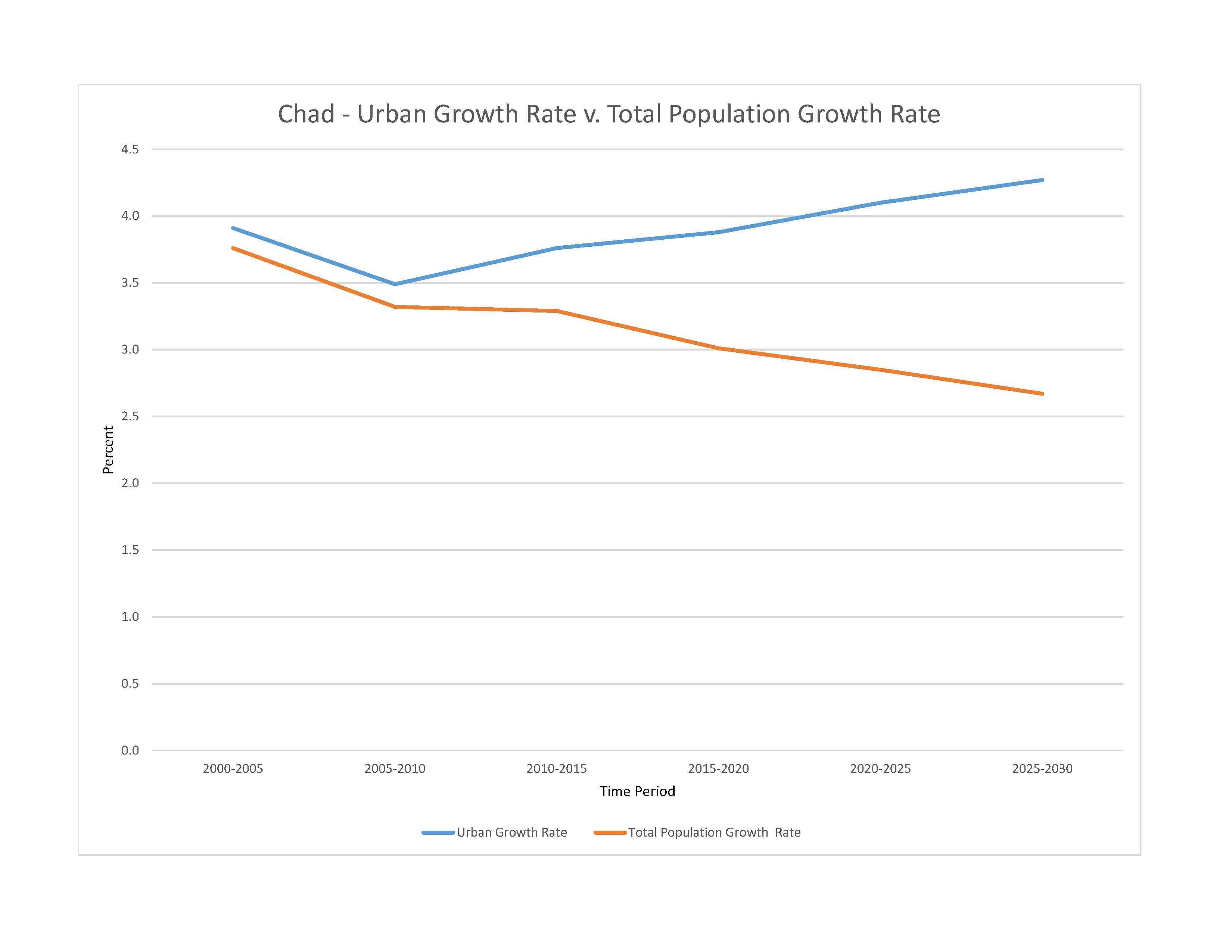
inadequate supplies of potable water; improper waste disposal in rural areas and poor farming practices contribute to soil and water pollution; desertification
party to: Biodiversity, Climate Change, Climate Change-Kyoto Protocol, Climate Change-Paris Agreement, Comprehensive Nuclear Test Ban, Desertification, Endangered Species, Hazardous Wastes, Law of the Sea, Nuclear Test Ban, Ozone Layer Protection, Wetlands
signed, but not ratified: Marine Dumping-London Convention
tropical in south, desert in north
agricultural land: 39.6% (2018 est.)
arable land: 3.9% (2018 est.)
permanent crops: 0% (2018 est.)
permanent pasture: 35.7% (2018 est.)
forest: 9.1% (2018 est.)
other: 51.3% (2018 est.)
urban population: 24.4% of total population (2023)
rate of urbanization: 4.1% annual rate of change (2020-25 est.)

widespread lack of access:due to civil insecurity and shortfall in cereal production - according to the latest analysis, about 1.86 million people are projected to experience acute food insecurity during the June to August 2023 lean season period; this would be an improvement compared to the previous year, mostly due to the higher year-on-year cereal output in 2022 after the below average 2021 production; acute food insecurity is underpinned by persisting insecurity in the Lac and Tibesti regions, which had displaced over 380 000 people by April 2023; furthermore, elevated food prices due to high fuel costs and localized crop losses during the 2022 floods are aggravating food insecurity (2023)
3.81% of GDP (2018 est.)
0% of GDP (2018 est.)
particulate matter emissions: 41.15 micrograms per cubic meter (2019 est.)
carbon dioxide emissions: 1.02 megatons (2016 est.)
methane emissions: 30.69 megatons (2020 est.)
municipal solid waste generated annually: 1,358,851 tons (2010 est.)
fresh water lake(s): Lake Chad (endorheic lake shared with Niger, Nigeria, and Cameroon) - 10,360-25,900 sq km
note - area varies by season and year to year
Atlantic Ocean drainage: Niger (2,261,741 sq km)
Internal (endorheic basin) drainage: Lake Chad (2,497,738 sq km)
Lake Chad Basin, Nubian Aquifer System
municipal: 100 million cubic meters (2020 est.)
industrial: 100 million cubic meters (2020 est.)
agricultural: 670 million cubic meters (2020 est.)
45.7 billion cubic meters (2020 est.)
NOTE: The information regarding Chad on this page is re-published from the 2024 World Fact Book of the United States Central Intelligence Agency and other sources. No claims are made regarding the accuracy of Chad 2024 information contained here. All suggestions for corrections of any errors about Chad 2024 should be addressed to the CIA or the source cited on each page.
This page was last modified 04 May 24, Copyright © 2024 ITA all rights reserved.